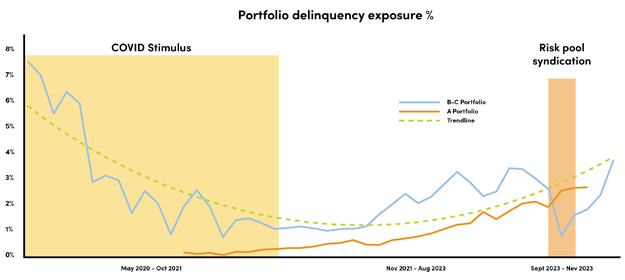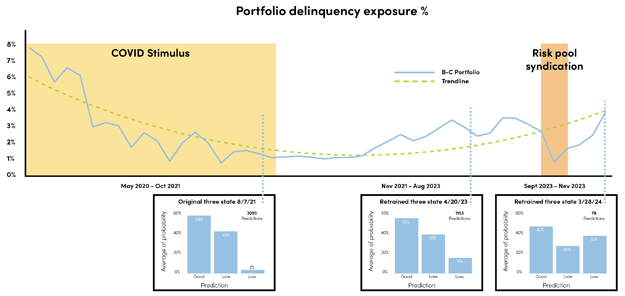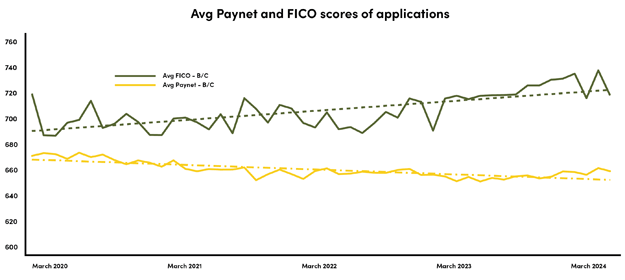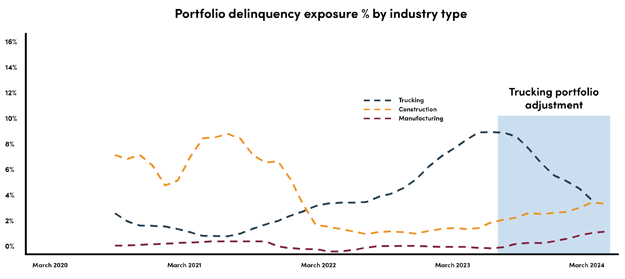
“Hey, hey, my, my. Rock and roll can never die.” -- Neil Young’s classic rock anthem popped up on the radio the other day.
I was advised that most of our audience will not know these famous lyrics by Neil Young nor the reference to his awesome 1979 album. Feel free to comment below on that assertion, but I have confidence in your music awareness and since Michael Toglia and the Equipment Finance Advisor team supported my Huey Lewis and the News AI piece, here goes.
The first time I heard this song I loved it. It has both a catchy melody and great lyrics. But it was the title of the album, “Rust Never Sleeps,” that really hooked me. All my life I have fought rust on bicycles, fishhooks, power tools and, of course, cars before they were largely made of plastic. What a great tribute to a worthy opponent – one that never sleeps and never gives up.
A Worthy Opponent
In equipment finance, risk is our worthy opponent – “Risk never sleeps.”
The idea that “risk never sleeps” came up at Tamarack recently when we were re-training our AI-based delinquency predictors. A team member pointed out that “the predictors are getting tougher.” My first thought was: “Well, that’s not surprising, delinquency risk has been growing.”

Quantitative easing during COVID reduced delinquency risk but now other economics are affecting portfolios through increased delinquency risk.
We had been watching delinquency exposures over for the past few months across multiple portfolios spanning a range of different assets classes and industries. The chart above summarizes the situation for two example portfolios supporting transportation, construction and agriculture. The blue line shows delinquency exposure for the past four years for a typical B-C portfolio and the red-orange line for an A-credit portfolio over a similar period.
The curve will be familiar to most. The massive stimulus implemented during the pandemic made delinquency a non-issue for all but the most challenged credits throughout 2021 and most of 2022. Many equipment finance companies booked record originations and reported record growth and profit during this “quantitative easing” as credit risk “eased.”
But risk never sleeps and portfolio managers who got comfortable or dozed off are now finding themselves with an uphill battle to maintain their portfolio’s financial performance and/or the credit standards of the business, as delinquency has come back into the economy. Corrective syndication actions like the one shown above are once again common revealing efforts to maintain delinquency exposure. But such efforts are reactive and temporary as other originations from the “go time” emerge suffering the same consequences.
Managing to Credit Standards
A senior risk manager told me, “Credit standards have to reflect a long-term outlook (relative to the economy) because equipment finance transactions represent term credit. It's almost impossible to predict economic conditions going 3 to7 years out, so standards have to reflect risk appetite over cycles.”
Fortunately, there is a tool to help manage this worthy opponent because like risk, AI never sleeps. AI delinquency predictors can be trained over multiple risk cycles and as often as necessary to capture indicators of the cycles as performance changes emerge in the portfolio as well as in measures of the economy. Risk predictors like delinquency and tier (interest rate) are typically trained on 50-100 inputs including macroeconomic indicators like FICO and PayNet scores creating an n-dimensional model for the risk cycles.
The average Good-Late-Loss probability distributions from predictors retrained during this period are shown below the delinquency curve at the time when they were retrained. Predictors get “tougher” when the outcome probabilities shift to late and loss outcomes. The predictors adapted to the data upon which they were trained. Late and Loss probabilities increased significantly as delinquency returned to the portfolio. The predictors respond relatively quickly because they are trained on the real outcomes of a specific business with a narrower credit profile as well as industry specific concentrations like trucking and construction. Underwriters operating to given credit standards will find fewer deals that meet those standards as the predictors “get tougher.”

Predictors learn from delinquency and “get tougher” thereby identifying increasing risk.
If we compare the “increased toughness” of the predictors for the example portfolio with the average credit scores from the same deals – roughly 4200 applications, two things immediately jump out from the data. First, while the PayNet scores are decreasing throughout the period of increased delinquency as expected, the magnitude and timing of the response is slower and smaller than the Good-Late-Loss distribution changes of the AI. This makes sense because credit scores are a market level measure of risk and thus are more balanced across industries and asset types.
The FICO curve is problematic as the average FICO scores of the applicants improved during the same period. This effect is real and has been noted and “explained” in recent consumer debt discussions. The FICO scores, as is the case with all credit scores, measure borrower behavior, but in this case they are not accurately measuring the behavior of interest to the leasing company – delinquency. While PayNet credit models focus specifically on equipment finance borrower delinquency, FICO focuses on consumer borrowing. As explained in the linked article, FICO scores have been improving because they are strongly influenced by consumer behaviors in certain classes of consumer debt, not the additional delinquency that has followed close behind the increased debt in leasing and the economy more broadly.

Average FICO and Paynet scores have not been good indicators of delinquency.
Portfolio Design Matters
“Risk managers need to construct their portfolios such that they will not perform horribly during the down times, while not missing out on opportunities during the good times,” said the senior risk manager. Good portfolio design is all about balancing risks with investments that respond differently to risk cycles. The figure below shows one example of how data can help understand why balance is so important and provide help in achieving good design.
When portfolio delinquency is broken down by industry the effects of the pandemic and resulting risk exposure is revealed to be very different for different industries. COVID supercharged transportation initially as consumers moved all purchasing online, but then came crashing down as supply chain issues in vehicle manufacturing were resolved and consumers came out of lockdowns. Portfolio managers were forced to relieve the pressure by shedding trucking deals at a loss. Construction investments and projects halted with initial pandemic uncertainty but then came roaring back with residential housing and infrastructure investments. Manufacturing equipment seems to have “weathered the storm” so to speak and maintained performance throughout, probably because this is a US-based portfolio and US manufacturing had to replace disrupted Chinese supply chains during the pandemic.

Delinquency varied widely by industry over the four-year pandemic period
AI predictors are trained repeatedly and can be trained specifically to the portfolio – in both time and space – to capture the differences in risk by industry, asset class, geography and credit tier over time. When data is aggregated and recorded continuously, risk awareness is improved, and prediction can be made more precise and actionable in a risk management strategy.
Wake Up, and Stay Awake with AI
Some of the biggest risks in equipment finance stem from changes in the behavior of customers and the economic behaviors of society at large. Human behavior constantly changes so the probabilities of undesirable outcomes, i.e., risk, also changes. Macroeconomic risk trends result from both socio-economic and political behaviors that not only change constantly but are often unexpected. Risk never sleeps in equipment finance.
But AI doesn’t need sleep and can scale to help monitor behaviors and predict unwanted outcomes. AI-based risk management predicts changes in outcome distributions proving actionable insights in how the risk of unwanted results is changing. When properly designed, prediction models enable proactive versus reactive responses across risk cycles to drive better performance through consistent adherence to the credit standards of the business.
Risk is a truly worthy opponent. It’s time for equipment finance companies to add the same skills and stamina to their team. If they have their data ready, AI is ready to go.